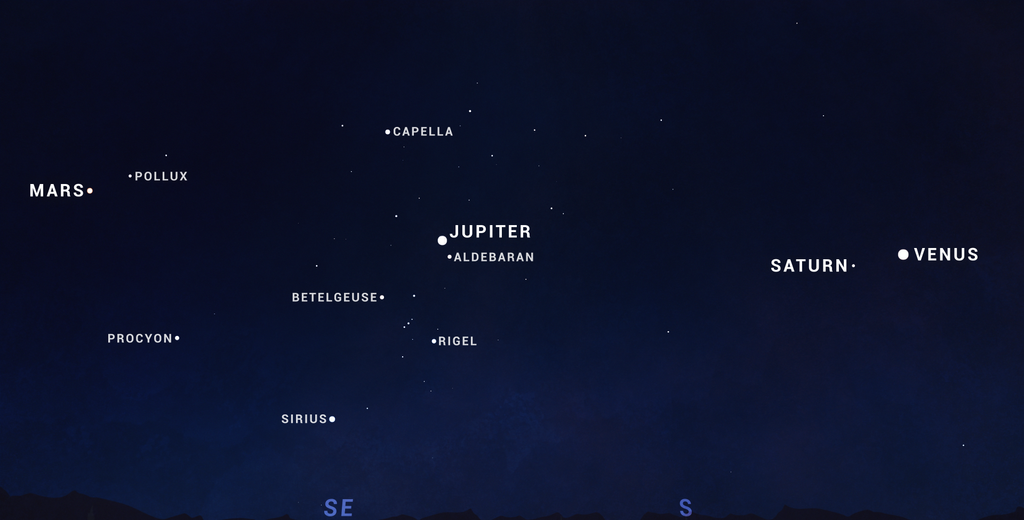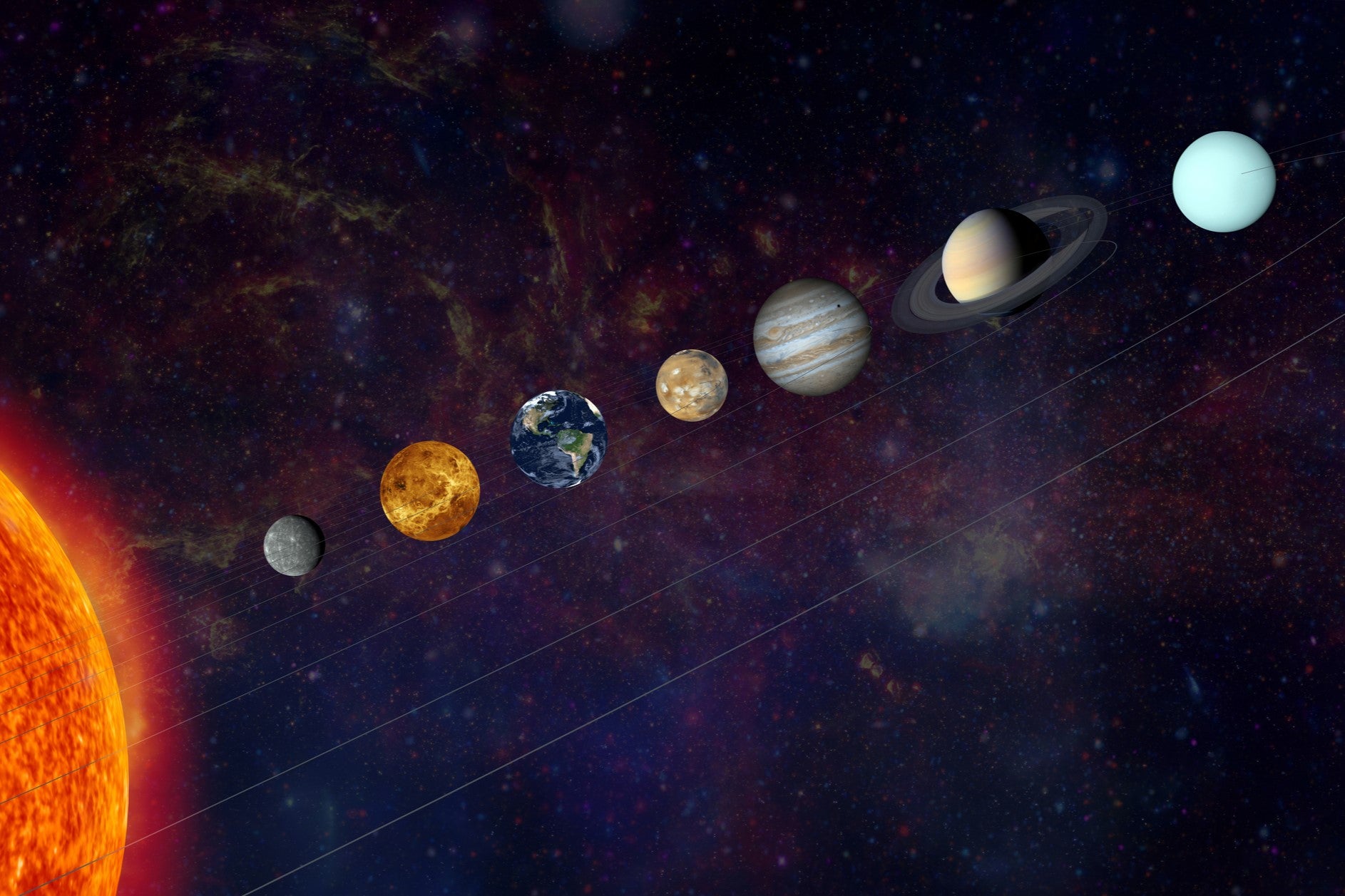January and February will see two remarkable planetary alignments, with one of them offering stargazers a chance to witness a celestial spectacle that will not be repeated for another 400 years.
On Friday 17 January and Saturday 18 January, six planets will line up in the night sky, in an event that some astronomers refer to as a planetary parade.
Mars, Jupiter, Neptune, Saturn, Uranus and Venus will appear together in a row, although Neptune and Uranus will only be visible with binoculars or a telescope.
Then on 28 February, seven planets will align in a spectacular configuration that will not occur again until the year 2492.
The best time to see the planetary parade in January is during the first couple of hours after the Sun goes down, with Saturn and Venus appearing close to each other in the southwest, Jupiter high overhead and Mars in the east.

The Red Planet will also be reaching “opposition” this month, making its closest approach to Earth in two years. It will therefore appear bigger and brighter in the night sky, making the planetary alignment even more pronounced.
“You’ll have the opportunity to take in four bright planets in a sweeping view,” said Preston Dyches from Nasa’s Jet Propulsion Laboratory.
“Uranus and Neptune are there, too, technically. But they don’t appear as bright planets… These multi-planet viewing opportunities aren’t super rare, but they don’t happen every year, so it’s worth checking it out.”

Astronomers advise people hoping to see the planetary phenomena to go to an area with minimal light pollution and to allow at least 30 minutes to allow vision to adjust to the darkness.
The latest forecasts from the Met Office suggest that the best place to see the planetary alignment on Thursday will be in areas of northern England and Wales where skies are expected to be clear.
The next best chance will be on Saturday evening, where patchy cloud cover will give most parts of the country glimpses of the planetary parade.


